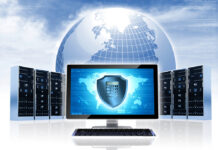In the rapidly evolving landscape of technology, live streaming is emerging as a dynamic tool that has revolutionized the way we all experience different events. Whether it’s a conference, a concert, a webinar, or a product launch, live streaming offers a myriad of advantages that extend far beyond the physical limitations of a venue. But what are the mechanics of live streaming, how does it work, and what are its benefits for your event? Here are the answers to your top questions.
Understanding the mechanics
Live streaming involves broadcasting real-time audio and video content over the internet to a global audience. The process entails capturing the event using cameras and microphones, encoding the data into digital format, and transmitting it to a content delivery network or CDN. The CDN then distributes the content to various servers strategically placed around the world. These servers optimize the delivery to individual viewers, ensuring smooth playback regardless of their geographical location.
The advantages of live streaming your event
1. Global reach and audience engagement
As AV hire, video, and live streaming specialists confirm, live streaming erases geographical boundaries, allowing your event to reach a global audience. Attendees no longer need to be physically present to participate, broadening your event’s impact and fostering engagement with diverse demographics.
2. A cost-effective solution
We are all aware that hosting a physical event involves substantial expenses, including venue rental, travel, accommodation, and logistics. But live streaming significantly reduces these costs while maintaining the potential for widespread audience engagement.
3. Flexibility and convenience
With live streaming, attendees have the flexibility to join the event from their preferred devices – whether it’s a smartphone, tablet, laptop, or desktop computer. This convenience encourages higher attendance rates and provides viewers with the freedom to participate from the comfort of their own spaces.
4. Real-time interaction
Modern live-streaming platforms often feature chat or comment sections, enabling real-time interaction between speakers and viewers. This interactivity bridges the gap between physical and virtual attendance, allowing participants to ask questions, share insights, and engage in discussions.
5. Analytics and data insights
Live streaming platforms often provide analytics tools that offer valuable insights into viewer demographics, engagement levels, and viewing patterns. These data-driven insights can help you tailor your future events to cater to your audience’s preferences.
6. Extended content lifespan
Live-streamed events can be recorded and archived, giving them a longer lifespan beyond the actual broadcast. This means that even those who couldn’t attend in real time can access the content at a later date, enhancing the event’s value and relevance.
Final thoughts
Live streaming has emerged as a powerful tool that transforms the way events are conducted and experienced. Its global reach, cost-effectiveness, convenience, interactivity, and data insights have elevated it to an indispensable part of modern event planning. By harnessing the capabilities of live streaming, event organizers can extend their audience reach, engage participants on a deeper level, and create impactful experiences that transcend geographical limitations. Whether it’s a corporate seminar or a music festival, live streaming brings people together, fostering connections in an increasingly digital world. So, if you’re looking to take your event to the next level, consider embracing the world of live streaming for an unforgettable experience.
Find a Home-Based Business to Start-Up >>> Hundreds of Business Listings.

















































